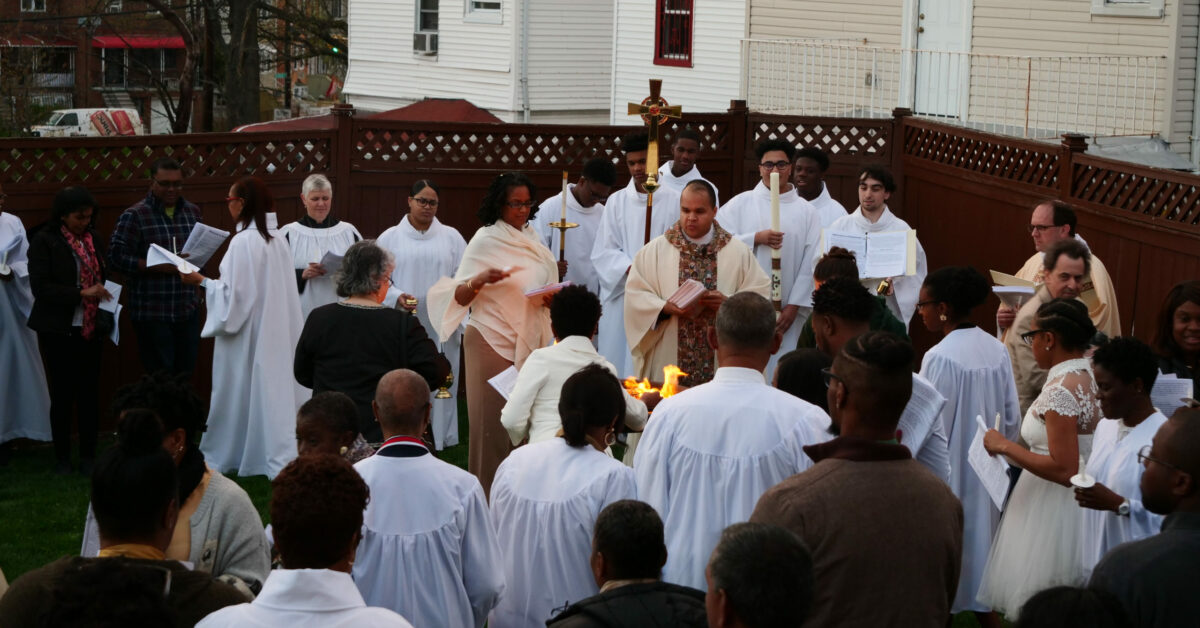Going Outside the Doors
The title for this week’s blog is admittedly unusual. Going outside the doors where and for what reason? In chapter 3 of Your Parish Is the Curriculum, Diana Macalintal tells the story of Jeff, an inquirer/seeker who was preparing to enter the catechumenate. Her story is not so much about Jeff but about the RCIA team’s preparation of the congregation for the rite of acceptance (when the seekers/inquirers cross the threshold into the formation process of the catechumenate). For several weeks she prepared the assembly by indicating how Jeff was identifying with the congregation’s mission and identity, particularly care for those in need in the community. She encouraged them to pray for him. And then on the Sunday of acceptance she invited them to do something they had never done before. The inquirers, including Jeff, and their sponsors were outside the doors of the church and she invited the assembly to get out of their pews “and go and pray for him and bring him into the church so that he can learn to hear and follow Jesus” (58). She didn’t know how the assembly would respond, but to their great surprise almost everyone followed them out the doors to surround the inquirers. As she notes, the parish “felt invested in making sure Jeff was welcomed well and began his formation supported by the community” (58). This kind of preparation of the assembly for its role takes planning and commitment in order to build a relationship between the inquirers/catechumens and the congregation. They went outside the doors to welcome them across the threshold toward following Jesus in this congregation.
That is the role of the baptized in faith formation. In Macalintal’s words, they are “to be a shining, clear example of a people of faith and a community of conversion” (49). The team involved in the catechumenal process should aim to coach the congregation to play this hospitable, modeling role vis-à-vis the seekers/catechumens. This conviction is born of the recognition that the baptized are agents of God’s mission in Christ toward the world. They engage in “wordless witness, explicit witness, and community witness” (50). The assembly’s relationship to the seekers/catechumens in the rites of faith formation is a demonstration of community witness, a ministry of hospitality and relationship-building.
In the remainder of chapter three Macalintal outlines the assembly’s role in the primary periods of the catechumenate process. First, in the period of evangelization and precatechumenate they primarily show hospitality. One way to do so would be through inviting seekers/catechumens into their homes to eat with them in order to get to know them better and for them to get to know the baptized better. Second, during the catechumenate stage the assembly should foster in the divine service an encounter with Christ and training for the Christian life among the catechumens. For those involved in facilitating faith formation this means preparing the assembly for the rite of acceptance. The assembly needss to be aware of the purpose, primary symbols, and subjects of the rite of acceptance into the catechumenate. They also need to be spiritually prepared to foster the encounter with Christ. Such preparation can include sharing a question with the assembly, often based on the Gospel reading for that week, such as, “In your life right now, what are you looking for from Jesus?” (55). Lastly, as in Jeff’s story, it includes preparing the assembly to go outside to greet and pray for the catechumens.
Third, during the rite of election into the period of preparation for baptism, the assembly’s primary role is to give testimony to the life of Christ in their midst. Since this is a “no-turning-back” moment for the catechumens that testimony helps to affirm and strengthen them for the journey to baptism during Lent. Macalintal offers twenty suggestions for how the assembly might give testimony. I’ll highlight a few:
- Write a letter to the pastor about the catechumen and what God has done in their life
- Provide cards for the baptized to write words testifying to the candidates’ progress or giving thanks to God for that progress
- Ask sponsors to keep a journal indicating how God has been at work in the lives of the catechumens
- Invite the elderly and homebound of the parish to pray for the catechumens (pp. 61-62)
Throughout Lent the assembly is encouraged to be present at the Scrutiny rites (rites of exorcistic prayer) and the rites presenting the Creed and Lord’s Prayer to the catechumens. They are also to be encouraged to participate in and model for the catechumens the Lenten disciplines of prayer, fasting, and almsgiving. They are to be examples of a penitential lifestyle.
Fourth, in the postbaptismal period of mystagogy (reflection on the experience of initiation into the church through baptism and the Lord’s Supper), the goals for the neophytes are that they live within the congregation, meditate on the Gospel, partake of the Lord’s Supper, and actively support those in need. The assembly should be doing the same things and modeling it for the newly baptized in their worship and in their common life. In this way, the encounter with the living Lord is fostered.
Thus Macalintal describes the congregation’s role in the catechumenal process. How might your parish go out the doors and build relationships with your seekers/inquirers and catechumens?
